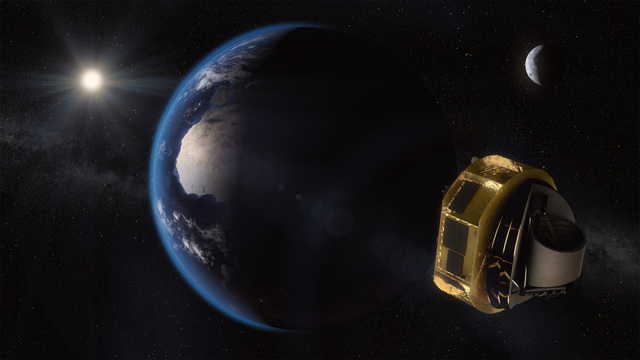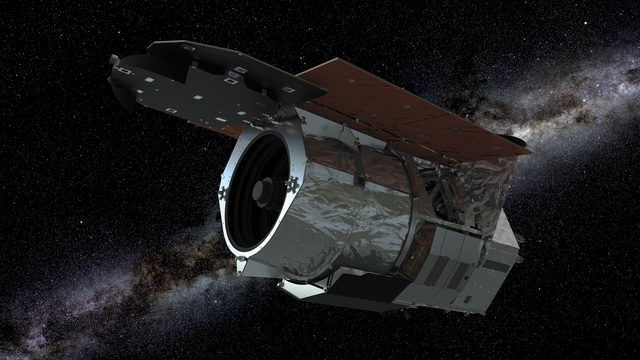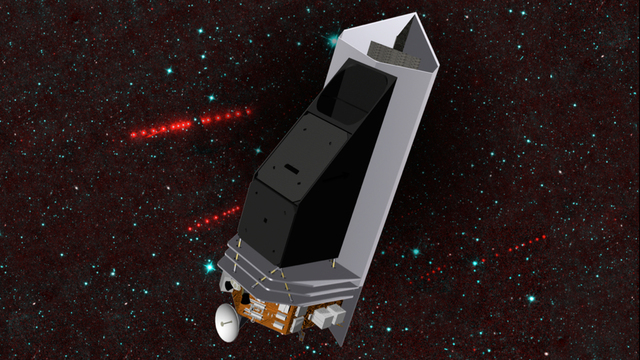
In Development
IPAC is involved in the development of a range of future observational facilities both in space and on the ground. IPAC contributes expertise in science formulation, data science, mission management, technology development, public outreach and communications. In particular, projects currently in development leverage IPAC's experience in maximizing the scientific return from targeted exploration of the infrared-submillimeter universe, all-sky surveys, and time series observations. IPAC science staff participate in setting the science requirements for these facilities.

ARIEL/CASE
Atmospheric Remote-sensing Infrared Exoplanet Large-survey
ARIEL, the Atmospheric Remote-sensing Infrared Exoplanet Large-survey, is a European Space Agency (ESA) M-class mission, with participation from NASA, to survey and characterize the atmospheres of 1000 exoplanets. ARIEL is a 1 m class telescope with 3 photometric channels and 3 spectroscopic channels covering continuously 0.5 to 8 microns in wavelengths. The goal of ARIEL is to survey ~1000 transiting exoplanets from gas giants to rocky planets in the hot to temperate zones of their host stars. ARIEL is expected to launch in 2031.
More Information
Roman
Nancy Grace Roman Space Telescope
The Nancy Grace Roman Space Telescope is a NASA observatory designed to explore the Universe in search of answers to fundamental questions about dark energy, exoplanets, and infrared astrophysics. The telescope has a 2.4 m primary mirror (the same size as the Hubble Space Telescope), but will have a field of view that is more than 200 times greater than that of the Hubble Space Telescope's WFC3 IR Channel, capturing much more of the sky in one pointing. The primary instrument, the Wide Field Instrument (WFI), will measure light from hundreds of millions of galaxies over the course of the prime mission lifetime and will perform a microlensing survey of the inner Milky Way to find exoplanets down to a tenth of Earth's mass. The Coronagraph Instrument will directly detect Jupiter analog exoplanets and dust and debris disks around nearby stars. The Nancy Grace Roman Space Telescope is designed for a five year prime mission and has been committed to be launched no later than May 2027.
More Information
NEO Surveyor
Near-Earth Object Surveyor
NEO Surveyor is a new mission that is designed to discover and characterize most of the potentially hazardous asteroids that are near the Earth. NEO Surveyor consists of an infrared telescope and wide-field camera operating at thermal infrared wavelengths. NEO Surveyor's primary science objectives are to assess the present-day risk of near-Earth object (NEO) impact, study the origin and ultimate fate of our solar system's asteroids, and find the most suitable NEO targets for future exploration by robots and humans. The NEO Surveyor mission has been funded for development by NASA, with a launch date of no later than June 2028.
More Information
UVEX
Ultraviolet Explorer
The Ultraviolet Explorer (UVEX) is targeted to launch in 2030 as NASA’s next Astrophysics Medium-Class Explorer mission. UVEX will undertake a synoptic survey of the entire sky in the near-UV and far-UV, probing the dynamic universe with a sensitivity more than 50 times better than GALEX. UVEX will also have a powerful broadband spectroscopic capability. UVEX will address fundamental questions from the Astro2020 Decadal Survey, and study the evolution of low-metallicity, low-mass galaxies. UVEX time-domain surveys will probe the aftermaths of gravitational wave-discovered compact object mergers, discover fast UV transients, and diagnose the early stages of explosive phenomena.
More Information

